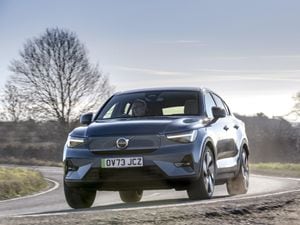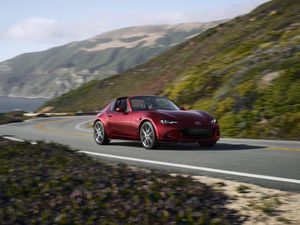UK Drive: The Lamborghini Urus might be the ultimate all-rounder
Lamborghini’s first SUV brings flamboyant style and supercar performance to the SUV market. Darren Cassey gives it a go.

What is it?

The car market is awash with SUVs these days, and they’re proving so popular that even companies you wouldn’t expect to build them are getting in on the act. In recent years we’ve seen the Rolls-Royce Cullinan, Bentley Bentayga, and soon the Ferrari Purosangue.
There’s another unexpected name in the mix, too: Lamborghini. Although it has built an off-roader in the past – the utterly bonkers LM002 – it’s better known for its ultra-focused supercars.
However, the luxury SUV market is incredibly lucrative, which is why the Italian firm now sells the Urus, a high-performance SUV that increased the company’s sales almost 50 per cent in 2019 and required a massive upgrade to its factory to cope with demand.
What’s new?

For Lamborghini, the Urus is a whole new thing, though it shares a lot in common with the Audi RSQ8. (Both companies are part of the Volkswagen Group). So it has a modified version of that car’s V8 engine and very similar infotainment screens inside.
Some of the technical highlights include a four-wheel-drive system with active torque vectoring and four-wheel steering to improve grip and handling, carbon-ceramic brakes to reign the Urus in from high speeds, and adaptive air suspension that allows it to be more performance- or comfort-focused at the press of a button.
What’s under the bonnet?

That V8 engine is a 4.0-litre twin-turbo petrol unit, which makes a hearty 632bhp and 850Nm of torque – considerably more than it makes in the Audi thanks to a little Lambo magic. The result is a 0-60mph time of 3.6 seconds and a top speed of 190mph.
Typically fuel economy would be irrelevant to a Lamborghini review, but this is meant to be used every day, so it’s worth noting. On a long motorway slog we saw our MPGs hit the low to mid 20s, but managed an average of about 18 during our time with the car in mixed driving – entirely respectable given the performance on offer.
What’s it like to drive?

Despite all that power, the size and weight of the Urus means it doesn’t feel quite as violently rapid as the numbers might imply, but given this is a big, luxury SUV, its accelerative abilities are quite astonishing. Couple this with the glorious bark of the engine in the sportier drive modes and it’s an incredibly rewarding car to drive quickly.
However, looking at the numbers, this is no surprise. Where the Urus really delights is in how well it settles down. In strada (road) mode, the engine and exhaust are relegated to a subtle yet pleasant growl, and the suspension softens up so the ride is generally very comfortable.
Inner-city driving can be a little intimidating at first because the Urus’ footprint is huge, but you soon dial into where the extremities lie. Then, enjoying the space, comfort and performance on offer makes it the go-to choice whether your journey is through tight urban traffic or a wide open B-road.
How does it look?
Arguably the Urus’ most controversial aspect is its styling. Lamborghini has applied its traditionally bold design language to the SUV body style, and it works surprisingly well in-person. The front end in particular can look a bit awkward and fussy in pictures, but after two weeks of driving the car it’s become easy to see past that and enjoy the unique styling that gives the car fantastic road presence.
Lamborghinis tend to work best in bright colours because their sharp, angular designs are complemented by brighter shades, but with the Urus’ position as an everyday car, our bright yellow ‘giallo auge solid’ paint job felt a little too obnoxious; a subtler colour would be welcomed.
What’s it like inside?

The interior is more than capable of living up to the hype provided by the exterior styling and performance on offer. It has nothing but the highest quality materials on all surfaces, with extremely comfortable seats and sleek twin infotainment screens in the dashboard.
At first, the elaborate startup sequence is great fun and the perfect theatre to accompany starting a supercar, but by the end of our time using the Urus every day, flicking the red switch up every time you want to turn the engine on or off became a touch annoying. A minor gripe, though…
What’s the spec like?

The Lamborghini Urus starts from £143,676, making it the firm’s least expensive car and, given its breadth of practicality and performance, arguably good value for money. Standard equipment includes the twin infotainment screens, digital instrument binnacle, Android Auto and Apple CarPlay, carbon ceramic brakes, adaptive air suspension and four drive modes.
Our car had options that took the total price to £176,170, with particular highlights including 22-inch alloy wheels (£3,216), heated seats in the front and rear (£438), heated leather steering wheel (£438), night vision (£1,839) and the upgraded Bang & Olufsen sound system (£4,375).
Verdict

It’s no surprise that the Urus has seen Lamborghini’s sales skyrocket. It’s a fantastic all-rounder, bringing the theatrical styling and extreme performance the Italian firm is known for to a package you could genuinely drive every day.
It might not completely hide its luxury SUV roots when you’re pressing on down a country road, but the compromise is an extremely comfortable ride when you’re not. There are performance SUVs that arguably handle better, but the Urus is up there with the best of them while also packing a genuinely luxurious interior.
The fact that, when compared with the rest of Lamborghini’s range, you could also make a value for money argument against it, simply seals the deal.





